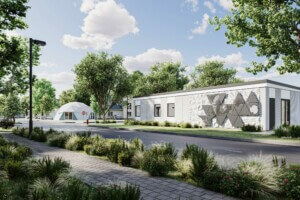In the 1800s, a French mathematician named Jules Lissajous began using parametric equations, beams of light, mirrors, and vibrating tuning forks to investigate harmonic motion creating what is known as the Lissajous curve. More than a century later at NYU’s Interactive Telecommunications Program, students Manuela Donoso and Luisa Pereira began using the Lissajous’ curve to further explore ways to visually represent musical harmony, using 3D printing technology to produce harmonic sculptures. Last fall, the pair also started using speakers, mirrors, and lasers to create devices and software that make prints and sculptures. They call their project The Harmonic Series. But they aren’t the only ones 3D printing music these days. Richard Dahlstrand of Sweden hacked a Lulzbot 3D printer to play and print classical pieces of music.
The Harmonic Series works by positioning two speakers with attached mirrors perpendicularly. A laser pointed at one mirror and then reflected by the other lands on a wall. When the speakers begin vibrating based on frequencies of voices, the laser moves, visualizing the frequencies on the wall. The tuning forks used in Lissajous experiment have been replaced with microphones and speakers to allow people to experiment more freely with musical notes and intervals, thus creating more or less chaotic visualizations. Watch the video below for a demonstration.
Donoso and Pereira went on to solidify these laser projected sounds by representing them on paper and in 3D printed sculptures. Currently they are preparing a web application so people can experiment and create their own visualizations. The duo is also producing a mobile harmonic device snuggled into a small wooden box that users sing into.
Dahlstrand’s Lulzbot printer, hacked for Stockholm’s Art Hack Day, works with three printing step motors moving at different speeds. The sounds are determined by the speeds of the step motors. There are microphones attached to the motors that pick up and amplify the sounds. This data produces black, wire looking pieces.
3D-printed music from Rickard Dahlstrand on Vimeo.










